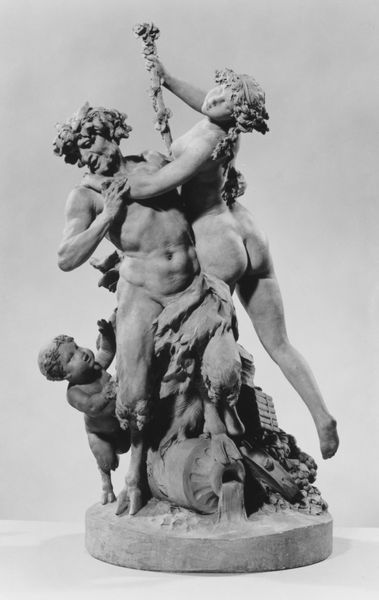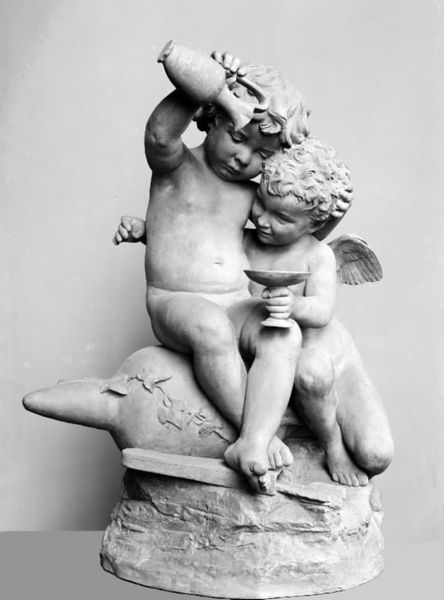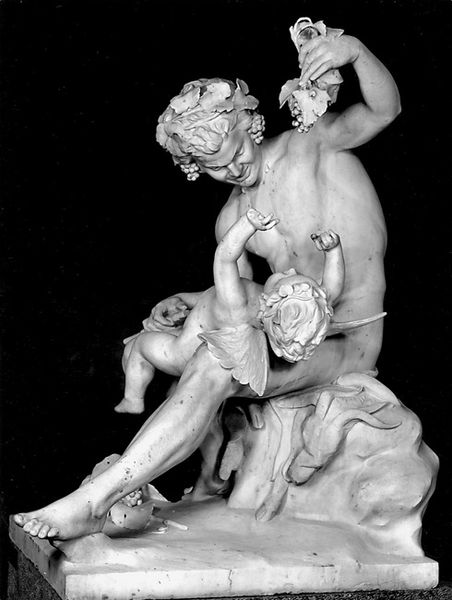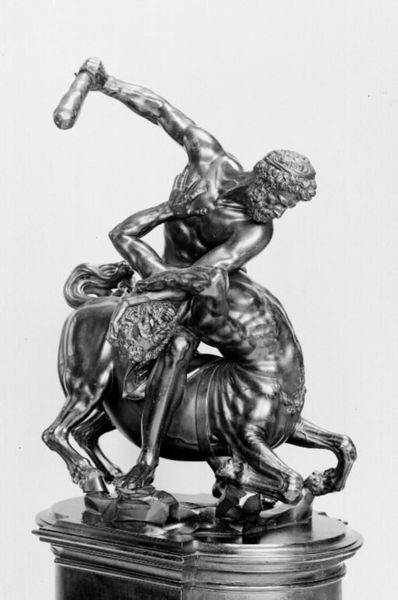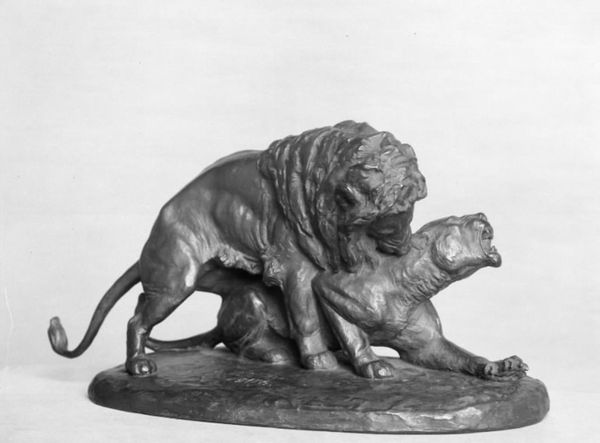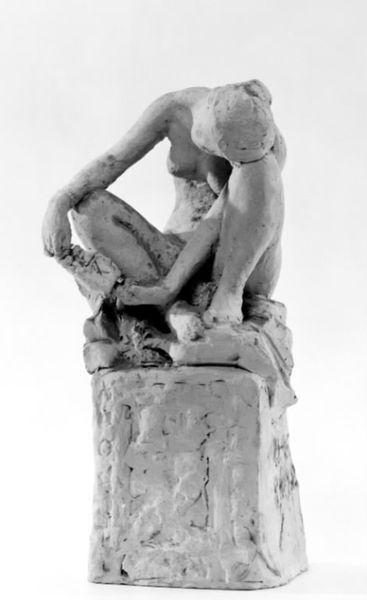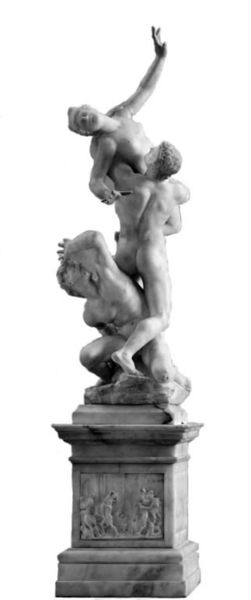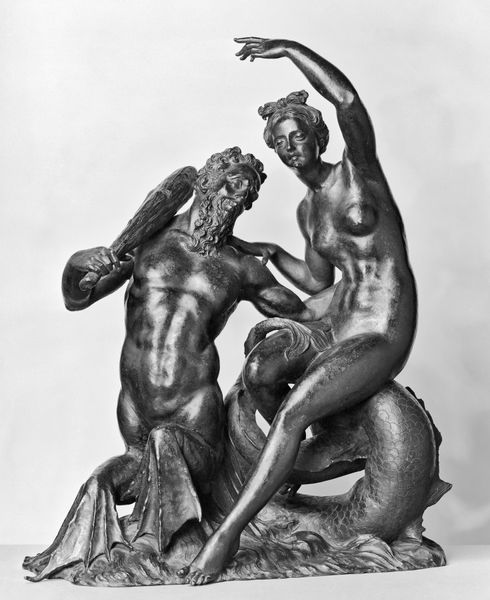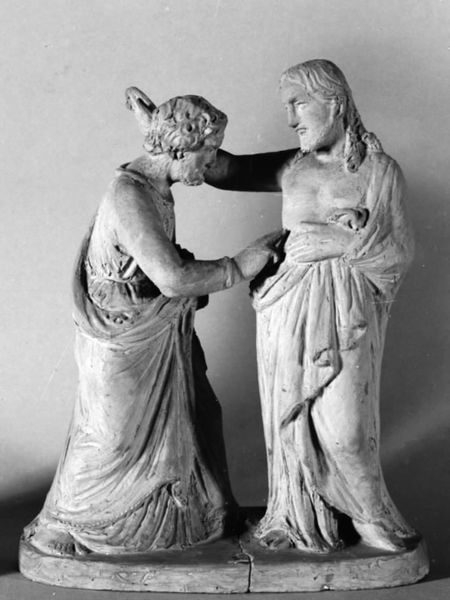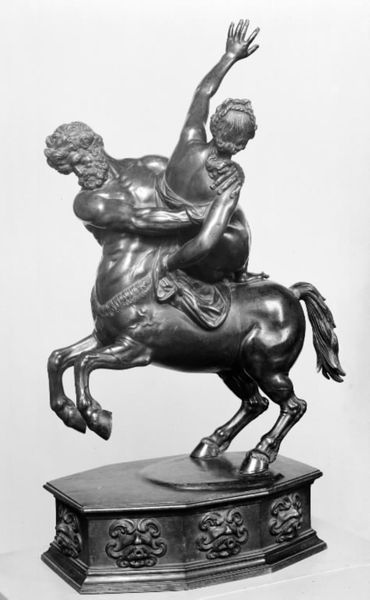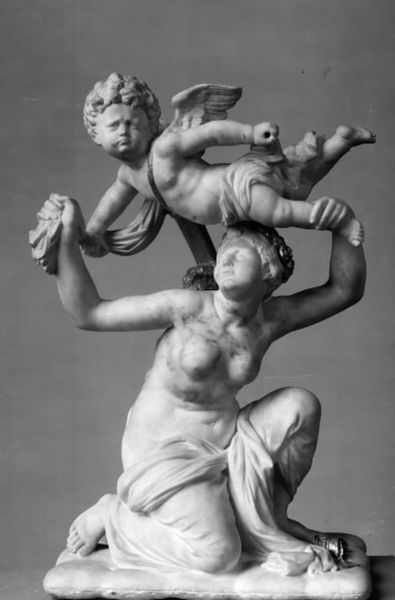
sculpture
#
allegory
#
sculpture
#
figuration
#
ancient-mediterranean
#
sculpture
#
black and white
#
monochrome
#
monochrome
Dimensions: 57 cm (height) (Netto)
Curator: Editor: So, we have before us Andreas Kolberg’s “A Bacchante Riding a Panther,” created in 1843. It's a sculpture, seemingly made from terracotta, depicting a nude youth atop a panther. There’s a distinct air of classical antiquity to it, and a feeling of… untamed energy? What strikes you about it? Curator: What I see immediately is the complex interplay of material and the myth being portrayed. This isn’t marble, the choice material for idealized forms in the 19th century that evoked power. Kolberg’s use of terracotta suggests something more earthy, less refined. What impact might the choice of such a readily available, humble material have on our reading of this scene from ancient mythology? Editor: I suppose using terracotta shifts the focus from the elite associations usually linked to classical sculpture, to the production itself and its connection to the labor of the artisan. Instead of the untouchable ideals of mythology, it reminds us of the physical making. Does it imply a criticism of those traditional elitist associations, by connecting it to craft? Curator: Precisely! Consider the industrial context of the 1840s. This piece, readily reproducible, participates in a growing market for art objects that could bring classical themes to a wider audience. The means of its production are as important as its allegorical subject. Can we reconcile this accessibility with the rather riotous, ecstatic scene it depicts? Does this change your understanding of the sculpture? Editor: It does. It’s not just a celebration of Bacchus and revelry, but an accessible, almost mass-producible object that carries that theme. Almost like democratizing Dionysus. Thanks for that fascinating insight. Curator: Indeed, it urges us to reconsider the material conditions that give rise to artworks, and how those conditions shape our interpretation. We are forced to look beyond the immediate "subject" to the labor of creation.
Comments
No comments
Be the first to comment and join the conversation on the ultimate creative platform.

